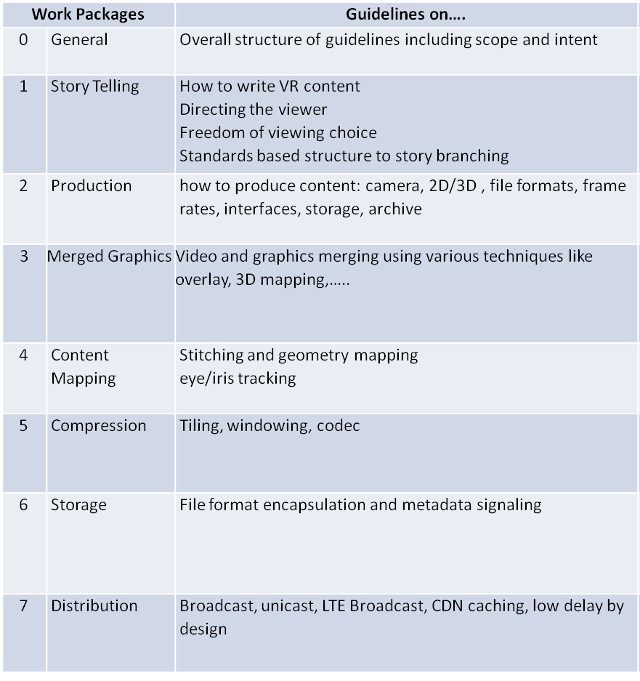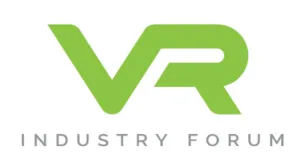A new organization called the VR Industry Forum (VRIF) was officially unveiled at CES 2017. It replaces the previously formed and less formal VR Interest Group with the stated goal “to further the widespread availability of high-quality audiovisual VR experiences for the benefit of consumers.”
We have been following the activities of the VR interest group for awhile and heard more about their activities at the recent Streaming Media for Field of Light Displays workshop at the SMPTE conference. The VR Industry Forum was initiated to implement a dues-paying structure within a formal 501-c not-for-profit organization to further facilitate their mission. The 28 Founding Members of VRIF are Akamai Technologies, ARRIS International plc, b<>com, Baylor University, CableLabs, Cinova Media, Dolby Laboratories, DTG, DTS, EBU, Ericsson, Fraunhofer, Harmonic, Huawei, Intel, Irdeto, Ittiam, MovieLabs, NABPilot, Qualcomm Technologies, Inc., Technicolor, TNO, Sky, Sony Pictures, Vantrix, Verizon, Viaccess-Orca and Orah.
Over the last year, over 200 people from a large group of companies have discussed how to advocate consensus around industry standards for the creation of an interoperable, end-to-end ecosystem for presenting high-quality audio-visual VR services. This includes live or on-demand through VR headsets but also viewing on traditional “2D devices” such as tablets.
The goals of VRIF include:
- Advocating voluntary industry consensus around common technical standards for the end-to-end VR ecosystem, from creation to delivery and consumption
- Advocating the creation and adoption of interoperable standards (VRIF will not develop standards itself); promoting the use of common profiles across the industry, and promoting and demonstrating interoperability
- Developing voluntary guidelines that describe best practices, to ensure high quality VR experiences
- Describing and promoting the use of VR services and applications.
“We hope to ensure that the VR industry avoids the fragmentation of standards and formats that has plagued audio-visual media in the past”, said David Price, VP, Business Development at Ericsson. “The recently announced industry association Global Virtual Reality Association (GVRA) has a narrow focus on just the headset and its manufacturers, whereas the VR Industry Forum has a complete end-to-end purview that goes from the story telling, the preparation, distribution through to the consumption of the VR content,” noted Price. “Nonetheless GVRA (and others) represent key constituents that will be part of the important liaison work our Forum will be working on.”
Chris Johns, Chief Engineer, Broadcast Strategy at Sky, said “VRIF will seek to establish best practices to ensure a high-quality user experience, and we believe this is crucial for the market to take off. We all expect that 2017 will be the year when intense consumer interest in VR spurs a quantum leap in the user experience.” Johns is also active in the UHD Forum which has a similar ecosystem theme for the adoption and proliferation of UHD content and hardware.
According to the GVRA’s web site, its mission is to, “to promote responsible development and adoption of VR globally with best practices, dialogue across stakeholders, and research. GVRA will be a resource for industry, consumers, and policymakers interested in VR.”
That sounds pretty similar, but the stakeholders are more narrowly focused from the VR headset perspective (Samsung, Acer, Google, HTC, Facebook and Sony).
At the Streaming Media for Field of Light Displays workshop, Price described that group activities would include publishing of guidelines and reports, organization of plug-fests and preparation of other information to aid the standards bodies and other groups. The VR interest group developed 15 working groups which are expected to accelerate their activity under the VRIF. These are shown in the table below.


One activity already well underway is a lexicon of VR terminology, which may be the first document to group releases. It has over 240 terms with a lot of context in seven categories.
VRIF is open to all parties that support its purpose. Membership and further information can be found at the website at www.vr-if.org.

